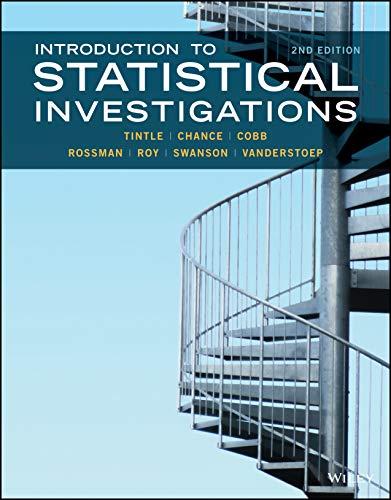Question
Even in these politically divisive times, most Republicans, Democrats, and independents agree that the president and Congress should prioritize lowering the costs of prescription drugs.
Even in these politically divisive times, most Republicans, Democrats, and independents agree that the president and Congress should prioritize lowering the costs of prescription drugs. However, while such support may make bipartisan cooperation possible, the most prominent policy proposals lack the consensus needed to make any of them a reality. Then, of course, there is the challenge of ensuring that any proposals implemented actually rein in costs without constraining medical innovation that saves and improves lives.
The USC Schaeffer Center provides evidence-based solutions for controlling the spiral of drug prices while rewarding innovation- as well as working to build the political consensus necessary to realize them. Schaeffer Center researchers have proposed initiatives that include: promoting value-based pricing to align drug costs with the benefits achieved, encouraging competition among generic drug manufacturers, introducing transparency to the drug-distribution system, and targeting global pricing to spread the burden more evenly around the world.
In February 2018, the President's Council of Economic Advisors issued a report outlining policy reform options that relied heavily on Schaeffer Center findings. Center research also has been cited in expert testimony to the U.S. Senate Committee on Health, Education Labor & Pensions.
Aligning Incentives with Value-based Pricing
Our nation's pharmaceutical manufacturers and health insurers have traditionally priced drugs per dose rather than by effectiveness. This can distort the incentives for payers and patients as in the case of standalone Medicare drug plans that actually penalize insurers for encouraging patient adherence.
As an alternative to the price-per-dose approach, value-based pricing seeks to better align incentives between payers and providers. The system links pricing to a drug's benefits as demonstrated in clinical trials and other data-driven methods that are reproducible and transparent. As suggested by Schaeffer Center Director Dana Goldman, Professor Karen Van Nuys, and others, examples of value-based pricing include:
Outcomes-based pricing, which bases the amount charged on how patients benefit as indicated by clinical or financial measures. Clinical measures may include laboratory values or patient-reported results. Financial measures may include other healthcare interventions avoided, such as hospitalization.
Indication-based pricing, in which drugs that can treat various diseases are paid for according to their relative value against each particular condition.
Drug licensing, in which manufacturers compete to sell exclusive licenses for drugs in exchange for a lump sum that, while large, would still be lower than if the same drugs were purchased from different companies over the agreed-upon period.
Money-back guarantees granting refunds from drug companies for patients who see no clinical improvement.
Yet, while value-based pricing for prescription drugs has taken hold throughout Europe, Americans have only begun to employ its methods. One perceived roadblock is that Medicaid's best-price rule aimed at safeguarding discounts keeps companies from employing these novel pricing arrangements. However, investigators including Schaeffer Center Director of Research Darius Lakdawalla found that, while the rule does present challenges, it need not impede progress.
"The law here is complex, and moving to a pay-for-value model for drugs will require close coordination between manufacturers, payers and regulators," Lakdawalla and his coauthors write.
High Cost, High Value
Value- and outcomes-based pricing must acknowledge that high-cost treatments can yield enormous societal benefits. One example is provided by proprotein convertase subtilisin/kexin type 9 (PCSK9) inhibitors, a promising treatment for cardiovascular disease.
PCSK9 inhibitors have been shown to lower low-density lipoprotein cholesterol levels by up to 75 percent in multiple trials. Further analysis demonstrates that they may also reduce major adverse cardiovascular events.
Unfortunately, their use has been limited by their high cost of roughly $15,000 per year before discounts. Studies show that 83 percent of PCSK9 inhibitor prescriptions are initially rejected of which only 26 percent of claims are eventually reversed. While further studies are needed, outcomes-based pricing presents a promising strategy for improving access to PCSK9 inhibitors at a cost in line with their value to patients and the healthcare system.
Encouraging Competition Among Generic Drug Makers
Nearly 88 percent of prescriptions written in this country are for generic drugs, and, for the most part, their prices are reasonable. But after Mylan dramatically increased the price of its epinephrine-administering EpiPen, and Turing hiked the cost of Daraprim by 5,000 percent, a national furor erupted.
YOUR ASSIGNMENT:
What are your thoughts as a solution to this ongoing problem of out of control drug prices?
Step by Step Solution
3.54 Rating (157 Votes )
There are 3 Steps involved in it
Step: 1
Addressing the issue of soaring drug prices requires a multifaceted ...
Get Instant Access to Expert-Tailored Solutions
See step-by-step solutions with expert insights and AI powered tools for academic success
Step: 2

Step: 3

Ace Your Homework with AI
Get the answers you need in no time with our AI-driven, step-by-step assistance
Get Started


